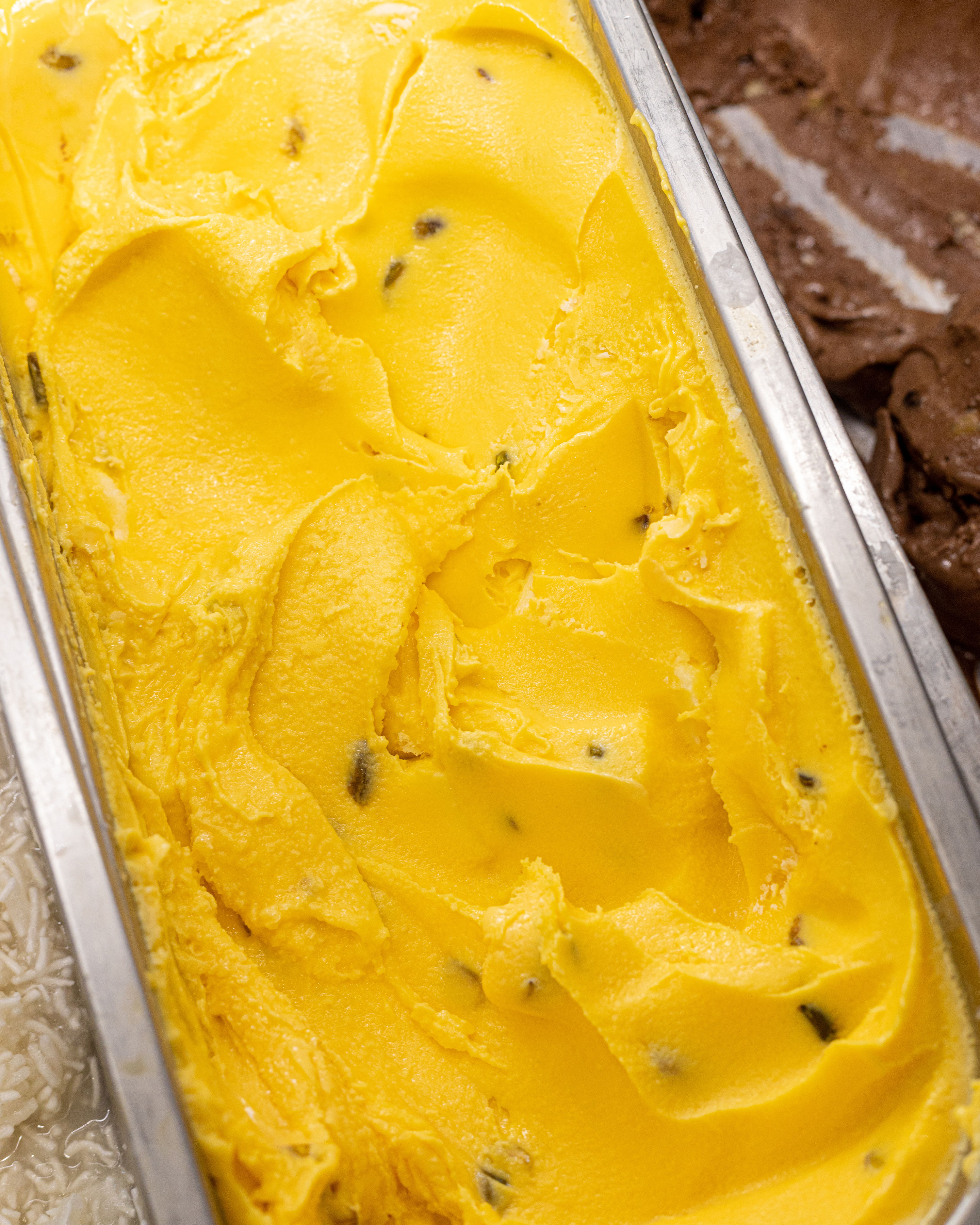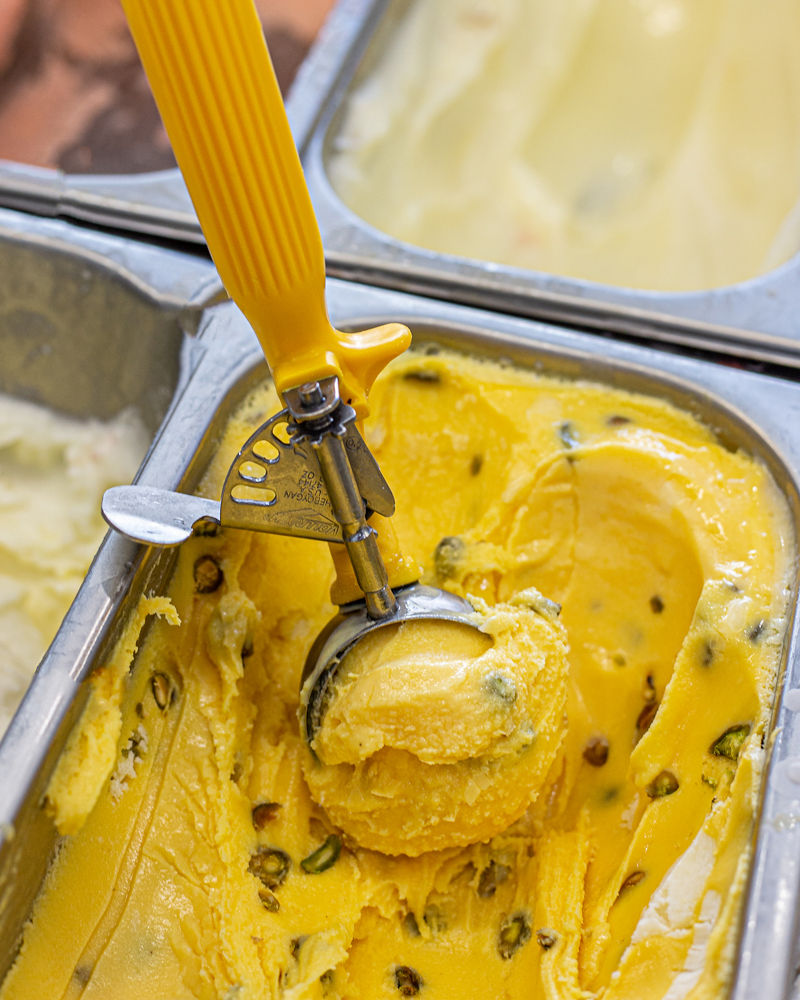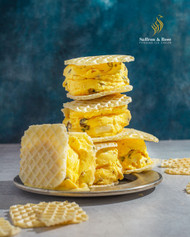The origin of Bastani (Persian ice cream)
Posted by Andrei on Apr 19th 2023
We are Saffron and Rose Persian Ice Cream. Our very name is made up of two of our best-selling ice cream flavors: the saffron with pistachios and the rose (declined in two variants: the white rose and the pink rose, equally loved by our community). In this article, you will learn the history behind saffron ice cream, also called Persian ice cream or just bastani.
Bastani, also known as bastani sonnati (بستنی سنتی) or bastani sonnati zaferani (بستنی سنتی زعفرانی). is a popular saffron ice cream in Iran, widely known as Persian ice cream.
WHAT IS BASTANI?
Widely known as Persian ice cream, bastani is one of the most popular ice creams in Iran. Also known as bastani sonnati, meaning "traditional ice cream" in Persian, or bastani sonnati zaferani, meaning "traditional saffron ice cream", it is an ice cream made of whole milk, heavy cream (khameh), egg yolks, sugar, rose water, saffron, vanilla, pistachios and salep.

WHAT IS THE ORIGIN OF BASTANI?
The earliest evidence of the consumption of cold desserts in the Persian region is from 500 BC, during the Achaemenid Empire known as the "Old Persian Empire" which was the first great Persian Empire. It extended from the end of the 6th century BC to the end of the 4th century BC over the territories of the current states of Turkey, Cyprus, Iran, Iraq, Afghanistan, Uzbekistan, Tajikistan, Turkmenistan, Syria, Lebanon, Israel, and Egypt and Central Asia. During this period, various syrups were poured over clean snow collected from mountain peaks or taken from special underground chambers called yakhchal to produce "fruit ice". Usually the ice cream was flavored with saffron, grape juice, fruit and other flavors.
In 400 BC, a very popular dessert was invented, faloodeh, a vermicelli-based ice cream often eaten mixed with Persian ice cream. Apart from snow, yakhchal, literally "ice pit", was used to produce ice cream in the region. The yakhchal is an ancient Persian icebox, ancestor of the refrigerator. In the 4th century BC, in Iran, Persian engineers already mastered the technique of storing ice in the middle of summer in the desert. The ice was brought from the surrounding mountains during the winter and was then stored in yakhtchals. There are still yakhchal used to store ice in the desert today and they date back several hundred years. In the part that emerges from the ground, the structure of a yakhchal has a dome shape, but also has an underground part used to store ice and sometimes food. The underground building has thick, heat-resistant walls up to 2 m thick. It is connected to qanats (aqueducts) and bâdgirs (wind catchers or wind towers) to keep the air cool. As a result, the ice melted very slowly and was available almost all year round. The yakhchal have a capacity of up to 5,000 m2. In present-day Iran, Afghanistan, and Tajikistan, the term yakhchāl is also used to refer to modern refrigerators.
SAFFRON
Saffron is a spice made from the dried stigmas of saffron flowers (Crocus sativus), and is one of the most expensive substances in the world. Up to 90% of the world's saffron crop is harvested in Iran. The word saffron is a loan from the medieval Latin safranum, and is also the ancestor of the Portuguese açafrão, the Italian zafferano and the Spanish azafrán. Safranum is originally a borrowing from Arabic zaʿfarān, saffron, which in turn can be associated with the word aṣfar, meaning "yellow." Based on the presence of saffron crops on the Iranian plateau, it is assumed that the Arabic word zaʿfarān is derived from the Persian word zar-parân meaning "golden-feathered," composed of zar (gold) and par (feather). Saffron flowers are sown in special plantations. The collection of the stigmas is done manually. It is a flower that blooms only 2-3 days, and for the finished spice to have all the necessary properties, the flowers must be picked immediately after the buds open. Traditionally, they are picked before sunrise, otherwise the pistils become too dry. It is important that the weather is clear and calm during the collection. The same day, the stigmas are separated from the buds. Each crocus contains only three stigmas, making the process of collecting saffron very laborious. To obtain 1 kg of spices, an average of 150,000 to 200,000 flowers must be processed. The collected stigmas are dried for 15 to 30 minutes in a special dryer or in the open air. The finished spice is stored in an airtight container. The quality of saffron depends directly on the harvesting conditions, the location of a particular pistil in the bud, the geographical characteristics of the region and the drying method. Often, producers divide the products into distinct varieties, with the highest quality saffron being made from the top pistils that have the richest color and aroma. The finished spice is a tangled ball of dark red threads sometimes interspersed with yellow. Saffron is also sold in ground form, but it is obvious that after such a procedure, the spice loses some of its properties. The aroma of saffron has a slight bitterness and resembles somewhat the smell of cut hay and honey.


